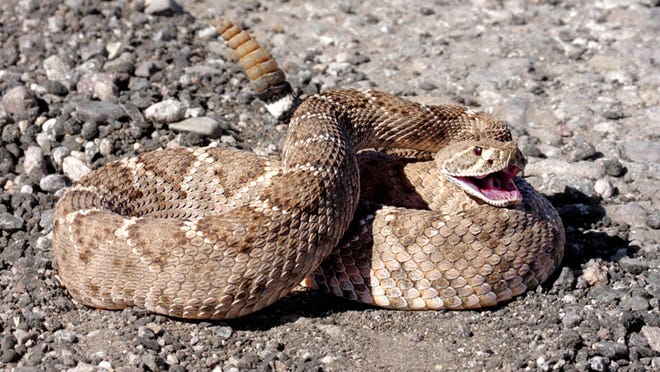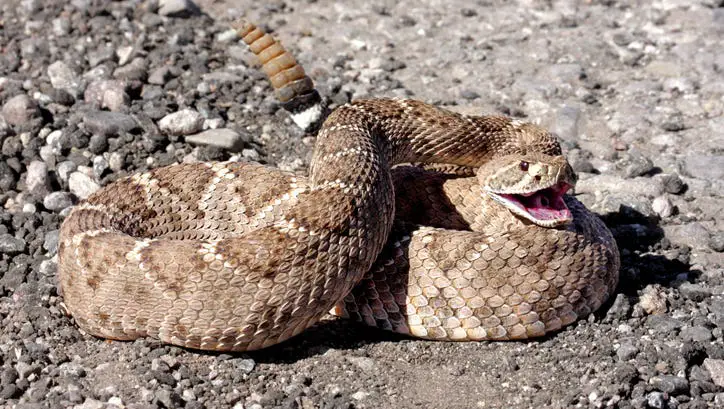Rattlesnakes are one of the most fascinating creatures in the world of wildlife. These venomous snakes are found in many parts of the world, but they are particularly common in Arizona. One question that often comes up about rattlesnakes is whether or not they hibernate during the winter months.
Despite the fact that rattlesnakes are cold-blooded reptiles, they can survive the harsh winter conditions of Arizona. In fact, many species of rattlesnakes do hibernate during the winter months, while others simply slow down their metabolism to conserve energy. So, do rattlesnakes hibernate in Arizona? The answer is yes, but the details of their hibernation patterns are more complex than you might think.
Yes, rattlesnakes hibernate in Arizona. During the winter months, from October to March, they seek out dens or burrows to protect themselves from the cold temperatures. They will emerge from hibernation in the spring when the weather warms up.

Do Rattlesnakes Hibernate in Arizona?
When winter arrives, many animals in Arizona retreat to warmer places or enter a state of hibernation to survive the cold, harsh conditions. But what about rattlesnakes? Do they hibernate, or do they stay active throughout the winter months?
What is Hibernation?
Hibernation is a state of inactivity that some animals enter to conserve energy and survive through the winter months. During hibernation, an animal’s metabolism slows down, and their body temperature drops to conserve energy. This state of inactivity can last for several months.
Do Rattlesnakes Hibernate?
Yes, rattlesnakes do hibernate in Arizona. As the temperatures drop, rattlesnakes seek out shelter in underground dens, often sharing their space with other snakes. They hibernate from late fall until early spring when the temperatures start to rise again.
Where do Rattlesnakes Hibernate?
Rattlesnakes typically hibernate in underground dens, such as abandoned animal burrows or rocky crevices. These dens provide the snakes with protection from the cold and predators, as well as a stable environment to hibernate in.
How do Rattlesnakes Prepare for Hibernation?
Before entering hibernation, rattlesnakes will feed heavily to build up fat reserves for the winter. They will also shed their skin to ensure they have a fresh layer to protect them during hibernation. Once they find a suitable den, they will enter a state of torpor, where their metabolism slows down, and their body temperature drops.
The Benefits of Hibernation for Rattlesnakes
Hibernation allows rattlesnakes to conserve energy during the winter months when food is scarce and temperatures are low. It also provides them with protection from predators and the elements. By hibernating, rattlesnakes can ensure their survival until spring arrives.
Rattlesnakes vs Other Animals
Not all animals in Arizona hibernate during the winter months. Some animals, such as birds, migrate to warmer places. Others, such as coyotes and bobcats, remain active throughout the winter. Rattlesnakes are unique in that they are one of the few reptiles that hibernate.
Rattlesnakes and Humans
While rattlesnakes are often feared by humans, they play an important role in the ecosystem. They help control rodent populations and are a vital food source for other animals, such as hawks and eagles. It is important to give rattlesnakes their space and avoid disturbing them, especially when they are in their dens.
The Bottom Line
Yes, rattlesnakes do hibernate in Arizona. They seek out underground dens to protect themselves from the cold and predators and enter a state of torpor to conserve energy. While they may be feared by humans, they play an important role in the ecosystem and should be respected.
Frequently Asked Questions
Arizona is home to many different species of wildlife. One of the most well-known creatures in the state is the rattlesnake. Many people wonder if rattlesnakes hibernate in Arizona during the winter months. Below are some common questions and answers to help you understand more about rattlesnakes in Arizona.
What is hibernation?
Hibernation is a state of inactivity that some animals enter during the winter months. It is a way for them to conserve energy when food is scarce. During hibernation, an animal’s body temperature drops, and their heart rate and breathing slow down.
Rattlesnakes are one of many animals that hibernate. However, not all rattlesnakes in Arizona hibernate. It depends on the species, location, and weather conditions.
Do all rattlesnakes hibernate in Arizona?
No, not all rattlesnakes in Arizona hibernate. Some species, such as the western diamondback, do hibernate during the winter months. However, other species, like the sidewinder, do not hibernate. Instead, they are active during the cooler months and seek shelter from the sun during the hottest parts of the day.
The decision to hibernate or not depends on the species’ biology and habitat. Some rattlesnakes are better adapted to the cold, while others are more suited to warmer temperatures.
Where do rattlesnakes hibernate in Arizona?
Rattlesnakes in Arizona typically hibernate in dens or burrows. These dens are often shared with other snakes, and some dens can hold hundreds of snakes at once. Dens are usually located in rocky outcroppings, caves, or underground tunnels.
Rattlesnakes will travel long distances to reach their hibernation sites. They are known to return to the same dens year after year, and some dens have been used for centuries by multiple generations of snakes.
When do rattlesnakes come out of hibernation in Arizona?
Rattlesnakes in Arizona typically come out of hibernation in the spring, usually around March or April. However, this can vary depending on the weather conditions. If it is a warmer winter, rattlesnakes may come out of hibernation earlier. If it is a colder winter, they may stay in hibernation longer.
When they emerge from hibernation, rattlesnakes are hungry and thirsty. They will spend the first few weeks of spring searching for food and water. This is when people are most likely to encounter them, so it’s important to be aware of your surroundings and take precautions when hiking or spending time outdoors.
What should I do if I encounter a rattlesnake in Arizona?
If you encounter a rattlesnake in Arizona, it’s important to stay calm and keep your distance. Rattlesnakes will not attack humans unless they feel threatened or cornered. Give the snake plenty of space and slowly back away.
Do not attempt to handle or kill the snake. This can be dangerous and is often illegal. If you are unsure what to do, contact a professional wildlife removal service for assistance.
Experts offer safety tips as rattlesnakes wake from hibernation in Arizona
In conclusion, the question of whether rattlesnakes hibernate in Arizona has been answered. While some species of rattlesnakes do indeed hibernate in the winter months, not all do. It is important to remember that each species has its own unique behaviors and habits.
Furthermore, it is important to note that rattlesnakes play an important role in the ecosystem of Arizona. They are apex predators and help to control the population of rodents and other small animals. It is important to respect and protect these creatures, as they are an integral part of the desert ecosystem.
In conclusion, rattlesnakes are fascinating creatures that have adapted to survive in the harsh desert environment of Arizona. While some species do hibernate in the winter months, it is important to remember that each species has its own unique behaviors and habits. By respecting and protecting these creatures, we can help to ensure that they continue to thrive in the desert ecosystem for generations to come.

